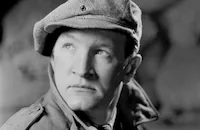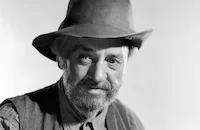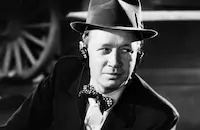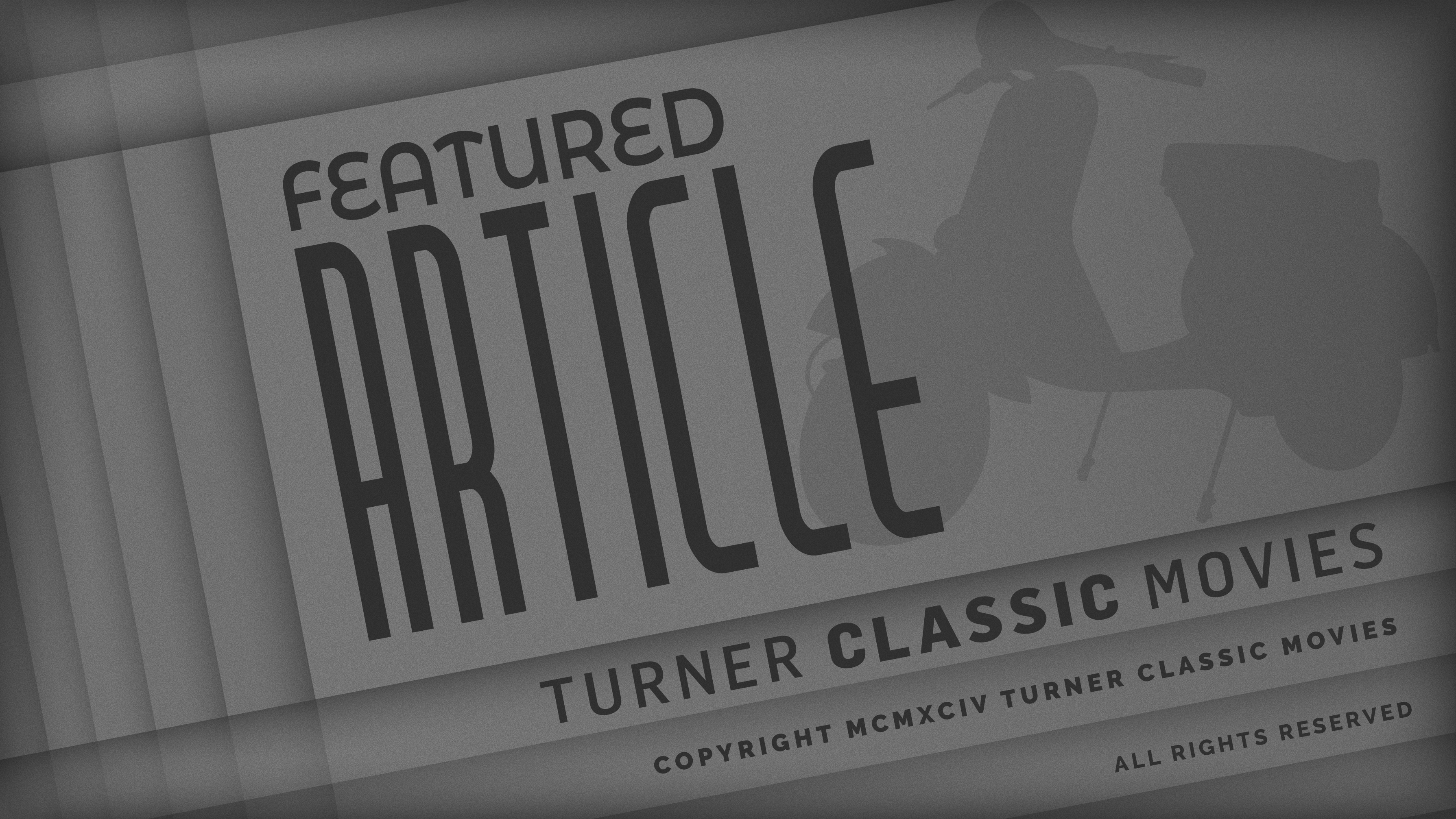The Petrified Forest

Brief Synopsis
Cast & Crew
Archie L. Mayo
Leslie Howard
Bette Davis
Genevieve Tobin
Dick Foran
Humphrey Bogart
Film Details
Technical Specs

Synopsis
Alan Squire, a disillusioned and destitute intellectual, is hitch-hiking across the Arizona desert. He arrives at the desolate Black Mesa Bar-B-Q, where he meets the naively idealistic Gabby Maple, whose internal struggle reflects her mixed heritage. Half romantic French, half practical American, Gabby dreams of escaping her dull life to live in France. She is immediately attracted to Alan's lofty philosophies, but their short-lived, innocent romance is shattered by the sudden arrival of Duke Mantee and his gang. Mantee, a brutal killer heading for the Mexican border, uses the restaurant as his hide-out, holding a small group captive while he waits for his girl. Under the strain of captivity, each hostage displays his true nature. The wealthy Edith Chisholm regrets the loss of her goals in exchange for a shallow life with Mr. Chisholm. Boze Hertzlinger, a local football star who is infatuated with Gabby, finds out that brute, physical strength is no match for an outlaw's gun. Finally, Alan admits that he is living in a world of outmoded ideas and strikes a deal with Mantee. Alan will sign his life insurance over to Gabby, if Mantee agrees to shoot him. Gabby, ignorant of Alan's sacrifice, inherits his money to pursue her dream. Duke escapes to meet certain death at the hands of the authorities.

Director

Archie L. Mayo
Cast

Leslie Howard

Bette Davis

Genevieve Tobin

Dick Foran

Humphrey Bogart

Joseph Sawyer

Porter Hall

Paul Harvey

Eddie Acuff
Adrian Morris
Nina Campana
Slim Thompson

John Alexander
Arthur Aylesworth
George Guhl
Constance Bergen
Francis Shide
Perc Teeple
Tom Mcguire
Gus Leonard
James Farley
Jack Cheatham
Crew
Henry Blanke
Delmer Daves
Mary Deerie
John Ellis
Elmer Ellsworth
Frank Evans
Leo F. Forbstein
Al Green
John Hughes
Fred Jackman
Bernhard Kaun
Charles Kenyon
Charles Lang
Warren E. Lynch
Owen Marks
Dick Mayberry
Harold Noyes
Flo O'neill
Orry-kelly
W. H. Patterson
Sol Polito
Frank Shaw
Willard Van Enger

Photo Collections
Videos
Movie Clip



Trailer
Hosted Intro
Film Details
Technical Specs

Articles
The Petrified Forest
But Leslie Howard believed that no one else could underplay the role of Mantee to such chilling effect as Bogart. He was so impressed with Bogart's stage performance, in fact, that he promised him he would use his influence to help him win the movie role. Howard kept his word, threatening to drop out of the picture unless Warner signed the actor. The rest is history. Warner gave in, Bogart got the part, and his performance was so electric that Warner signed him to a long-term contract. Bogart never forgot Howard's generosity: years later, he and Lauren Bacall named their daughter Leslie after him. (Howard had died in a plane crash during WWII.)
Sherwood based the character Duke Mantee on public enemy #1 at the time, John Dillinger. Bogart happened to closely resemble the gangster, and he studied film footage of Dillinger to perfect his mannerisms. Fascinated audiences flocked to both the play and the movie to see this version of the infamous gangster.
Filmed entirely on a Warner Bros. soundstage, The Petrified Forest definitely retains a stage-bound feel. The camera rarely leaves the interior of the diner, and the movie is driven by such evocative but stagy dialogue as "you're the last great apostle of rugged individualism" (Howard speaking to Bogart). However, unlike other films for which such qualities are the kiss of death, The Petrified Forest is vital and engaging, partly due to the strength of the play itself and partly due to its first-rate performances. All the actors underplay their roles quite effectively. (Even Bette Davis, as the The New York Times reviewer noted: "Davis demonstrates that she does not have to be hysterical to give a grand portrayal.")
Howard was coming off the film The Scarlet Pimpernel (1934), for which he received superb notices. In The Petrified Forest, he plays Alan Squier, a disillusioned Englishman who has left his rich way of life in Europe to hitch-hike across America in search of meaning and purpose. After wandering into a diner/gas station in Arizona's "Petrified Forest," he meets waitress Gabrielle (Davis), a dreamer and would-be poet who longs to see Paris. Touched by her romantic vision of life, he falls in love with her, at which point Duke Mantee arrives with his gang. The contrasts between Howard (the civilized, highbrow, poetic talker) and Bogart (the rough, uneducated, blunt thug) are a high point of Sherwood's story, and it's easy to see why the two enjoyed working together so much in these roles.
The Petrified Forest was remade in 1945 as Escape in the Desert. In 1955, two years before his death, Bogart again played Duke Mantee in a live television production of the play, directed by Delbert Mann. Lauren Bacall and Henry Fonda played the roles originated by Davis and Howard.
Producer: Henry Blanke
Director: Archie Mayo
Screenplay: Charles Kenyon, Delmer Daves, based on the play by Robert E. Sherwood
Cinematography: Sol Polito
Editing: Owen Marks
Music: Bernhard Kaun
Art direction: John Hughes
Cast: Leslie Howard (Alan Squier), Bette Davis (Gabrielle Maple), Humphrey Bogart (Duke Mantee), Genevieve Tobin (Mrs. Chisholm), Paul Harvey (Mr. Chisholm), Charley Grapewin (Gramp Maple), Porter Hall (Jason Maple), Dick Foran (Boze Hertzlinger).
BW-83m. Closed captioning.
by Jeremy Arnold

The Petrified Forest
The Petrified Forest on DVD
First, while the other five movies in the set all retain a classic urban setting and contain numerous scenes of shootouts, drive-bys, and elaborate servings of justice, The Pertrified Forest, by contrast, is adapted from a high-minded stage production (by Robert E. Sherwood) and features outlaws only as part of a larger societal assemblage, meant to serve as a microcosm. Set in a remote desert location, the story features Romantic leads (with a capital "R") who ponder weighty issues of society and humanity. In fact, the movie has more in common with a "social problem" film like William Wyler's Dead End (1937). All that said, can anyone name the gangster that Humphrey Bogart plays in Dead End? In The Pertrified Forest Bogart is Duke Mantee, one of the most unforgettable gangster portrayals of the era, and a famous star-making role for the actor, then struggling to make a name for himself after years of small parts on the stage and screen. All of the characters in the Sherwood story discuss the criminal psychology of Mantee, even when he is offscreen. Bogart's menace is palpable and this aspect of the production alone qualifies The Pertrified Forest as one of the most important Gangster films of the 1930s.
The film opens in the Arizona Desert, as we meet the staff of a combined gas station/diner: WWI veteran Jason Maple (Porter Hall), his daughter Gabby (Bette Davis), her Gramp (Charley Grapewin), and handyman Boze (Dick Foran). As is more than implied, all of the men in this group are, if not "petrified," at least stuck re-living their past glories as war hero, football star, and local settler. Only Gabby looks ahead and wishes to leave the barren desert for a rich and artistic life abroad. Various outsiders come to the diner: Alan Squire (Leslie Howard) is a European intellectual, self-aware to the point of self-parody. He is wandering the country by foot, and while he is quick to label those around him, he exhibits great charm while doing so. Squire admires Gabby's optimism and cultured enthusiasm (she paints and reads poetry). A high society couple named Chisolm (Genevieve Tobin and Paul Harvey), along with their chauffer Joseph (John Alexander), are taken hostage by notorious gangster Duke Mantee and his gang, on the lam from Oklahoma. Everyone ends up back at the Black Mesa Bar-B-Q, where Mantee controls the situation, but not all of the emotions on display.
There is plenty of interesting back story to the production of The Pertrified Forest, which is dealt with at length in the DVD extras. A 15m. featurette called The Petrified Forest: Menace in the Desert and the audio commentary by Bogart biographer Eric Lax both emphasize the crucial part the role of Mantee played in the career of Humphrey Bogart. It seems Warner Bros. signed Howard and Bogart to reprise their roles from Robert E. Sherwood's Broadway play, but while Bogart was en route to California, resident studio tough-guy Edward G. Robinson was given the script to look over. Robinson was being paid for three films a year by Warners whether they were made or not, and he was overdue for a role. Robinson liked the script and was initially enthusiastic. He reconsidered, however, when he realized that the studio planned to tout the Howard-Davis teaming in their publicity. The Robinson angle became a moot point when Howard caught wind of the notion and famously threatened to walk off the project if Bogart was not given the role. Bogart was paid (as a freelancer) $750 a week with a three week guarantee, or about the same as his initial Warner Bros. salary four years earlier. He brought his Broadway wardrobe West to revive his faux-Dillinger look as Duke Mantee. The results, of course, proved to be as sensational as the stage production had been, and resulted in a long-term contract with Warners. The DVD commentary and featurette also highlight the importance of Leslie Howard to the project. Howard wielded power as one of the producers of the Sherwood play, and of course in 1936 he was a major star both in America and Britain. As is not lost on the commentators of this DVD, there is irony in the fact that the type of movie stardom that Bogart would soon represent almost completely supplanted the cultured European leading man image that Howard exemplified. As for Bettie Davis, she had gotten the best notices of her career to that point while teamed with Howard for a prestigious production of W. Somerset Maugham's Of Human Bondage (1934). That film was done on loan-out to RKO Pictures, so Warner Bros. was more than happy to capitalize on the re-teaming of the pair for a home-grown project. (They were reunited for the third and final time in the WB romantic comedy It's Love I'm After (1937), also directed by Archie Mayo).
The transfer quality on the main feature is excellent, although there are some problems on the source print, namely slight grain and a few stray lines near what would have been reel changes. The audio contains some crackles but the dialogue is crystal clear, and is a further indication that some of the best restoration being routinely performed today is in this area. Like the other DVDs in the Warner Bros. Gangsters Collection, The Pertrified Forest can be viewed as part of a Leonard Maltin-introduced "Warner Night at the Movies." This entertaining program includes a generous sampling of other 1936 fare, including the trailer for Bullets or Ballots, one of the first films Bogart made under his new post-Petrified Forest contract with Warners (ironically in support of Edward G. Robinson); a Vitaphone musical short called Rhythmitis, featuring lanky hoofer Hal LeRoy; and Friz Freleng's Coo Coo Nut Grove, a spot-gag cartoon with wall-to-wall movie star-as-animal caricatures. An audio-only bonus is a radio adaptation of The Petrified Forest broadcast in January, 1940 on CBS' Screen Guild Players program. It features Bogart and, in the other lead roles, Joan Bennett and Tyrone Power.
For more information about The Petrified Forest, visit Warner Video. To order The Petrified Forest, go to TCM Shopping.
by John M. Miller
The Petrified Forest on DVD
Quotes
Any woman's worth everything that any man has to give. Anguish, ecstasy, faith, jealousy, love, hatred, life or death. Don't you see that's the whole excuse for our existence? It's what makes the whole thing possible and tolerable.- Alan Squier
But let me tell you one thing, Mr. Squier. The woman don't live or ever did live that's worth five thousand dollars!- Gramp Maple
Well, let me tell you something. You're a forgetful old fool. Any woman's worth everything that any man has to give: anguish, ecstasy, faith, jealousy, love, hatred, life or death. Don't you see that's the whole excuse for our existence? It's what makes the whole thing possible and tolerable.- Alan Squier
Any woman's worth everything that any man has to give. Anguish, ecstasy, faith, jealousy, love, hatred, life or death. Don't you see that's the whole excuse for our existence? It's what makes the whole thing possible and tolerable.- Alan Squier
The trouble with me, Gabrielle, is I, I belong to a vanishing race. I'm one of the intellectuals.- Alan Squier
That, that means you've got brains!- Gabrielle Maple
Hmmm. Yes. Brains without purpose. Noise without sound, shape without substance.- Alan Squier
Petrified forest is a lot of dead trees in the desert that have turned to stone. Here's a good specimen.- Gabrielle Maple
So that was once a tree? Hmmm. Petrified forest, eh? Suitable haven for me. Well, perhaps that's what I'm destined to become, an interesting fossil for future study.- Alan Squier
Let there be killing. All this evening I've had a feeling of destiny closing in.- Alan Squier
You're in love with her, aren't you?- Mrs. Edith Chisholm
Yes, I suppose I am. And not unreasonably. She has heroic stuff in her. She may be one of the immortal women of France. Another Joan of Arc, George Sand, Madame Curie, or Du Barry. I want to show her that I believe in her, and how else can I do it? Living, I'm worth nothing to her. Dead, I can buy her the tallest cathedrals, golden vineyards, and dancing in the streets. One well-directed bullet will accomplish all that, and it'll earn a measure of reflected glory for him that fired it and him that stopped it. This document will be my ticket to immortality. It'll inspire people to say of me, "There was an artist who died before his time." Will you do it, Duke?- Alan Squier
I'll be glad to.- Duke Mantee
Trivia
Leslie Howard and Humphrey Bogart had played the same roles in the stage version. Warner Brothers wanted to put Howard in the film but replace Bogart with Edward G. Robinson. Howard insisted on Bogart, and Robinson was happy to step aside from yet another gangster role. Humphrey Bogart would later name his first child with Lauren Bacall (qv), Leslie, in honor of Leslie Howard, the man who gave him his first big break.
Notes
Both Leslie Howard and Humphrey Bogart starred in the stage version of Robert Sherwood's play. Contemporary sources note that Howard's acceptance of the role of Squires was contingent on Bogart playing Duke Mantee. Bogart's success resulted in a long term contract with the studio. Warner Bros. files indicate that Arthur Aylesworth replaced Willard Robertson, Chic Sale was considered for "Gramp" and Veree Teasdale was considered for "Mrs. Chisholm." Daily Variety notes that the film was shot on location at Red Rock Canyon, CA. After shooting two different endings, the studio decided to retain the one which ended the play in which the character played by Howard is killed. Modern sources credit Bernhard Kaun with the musical score. Warner Bros. remade the play in 1943 as Escape in the Desert, directed by Edward A. Blatt and starring Philip Horn and Helmut Dantine, and a television version starring Bogart and Lauren Bacall was made in 1955.

Miscellaneous Notes
Released in United States 1935
Released in USA on video.
Released in United States 1935
















